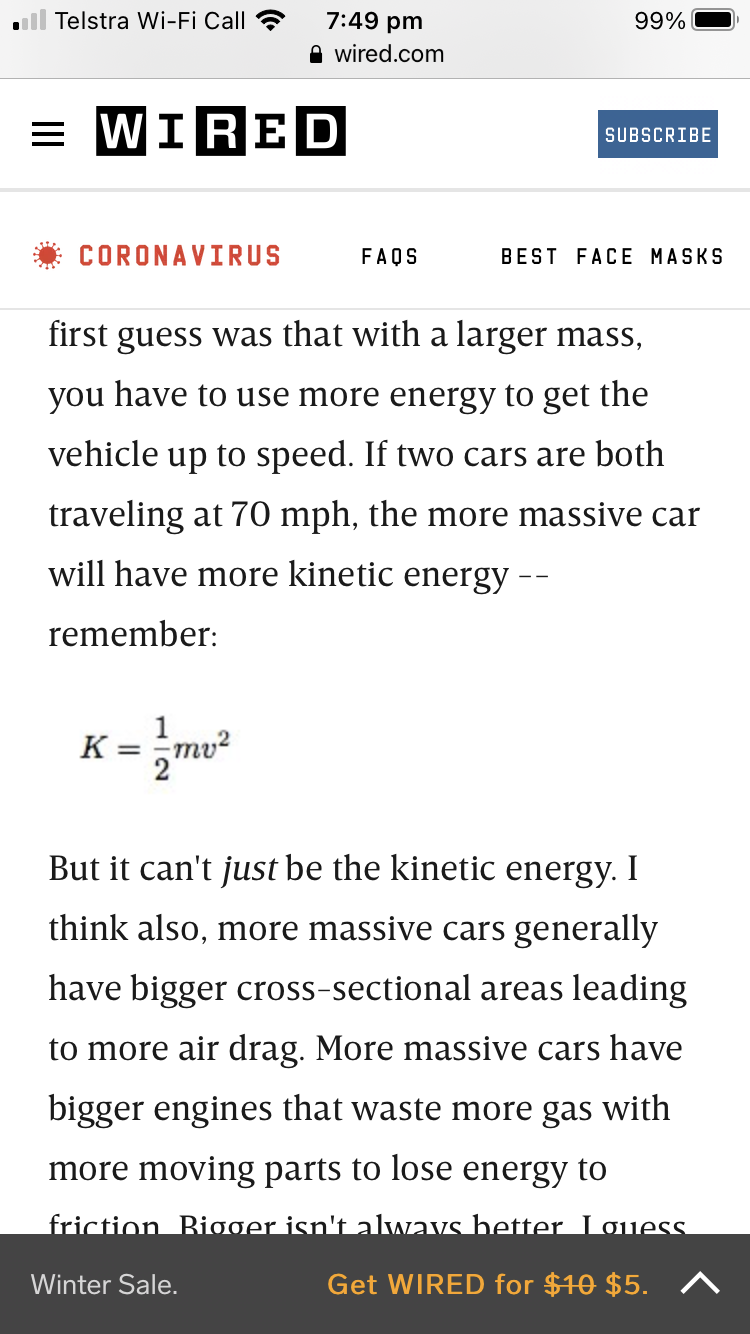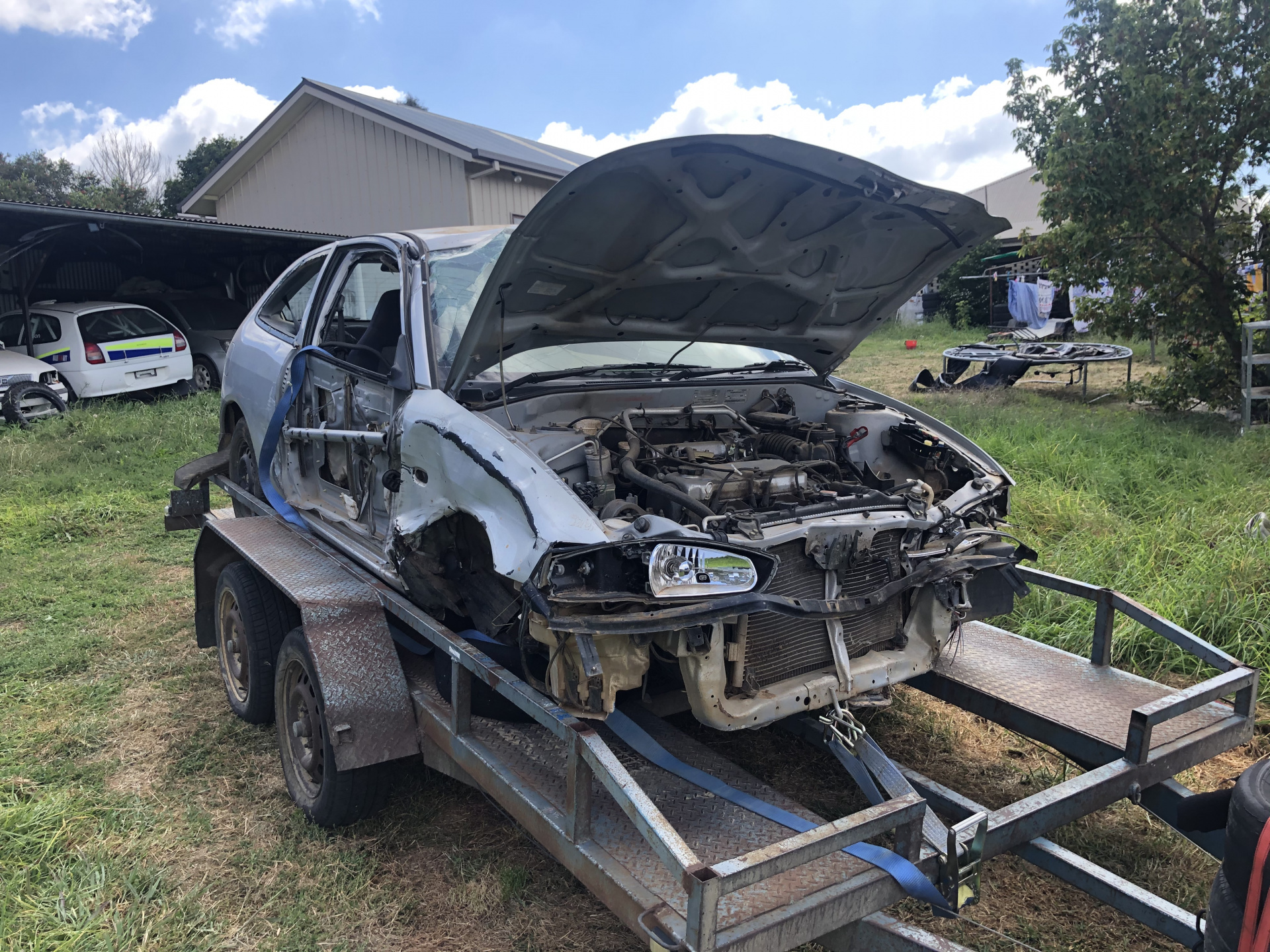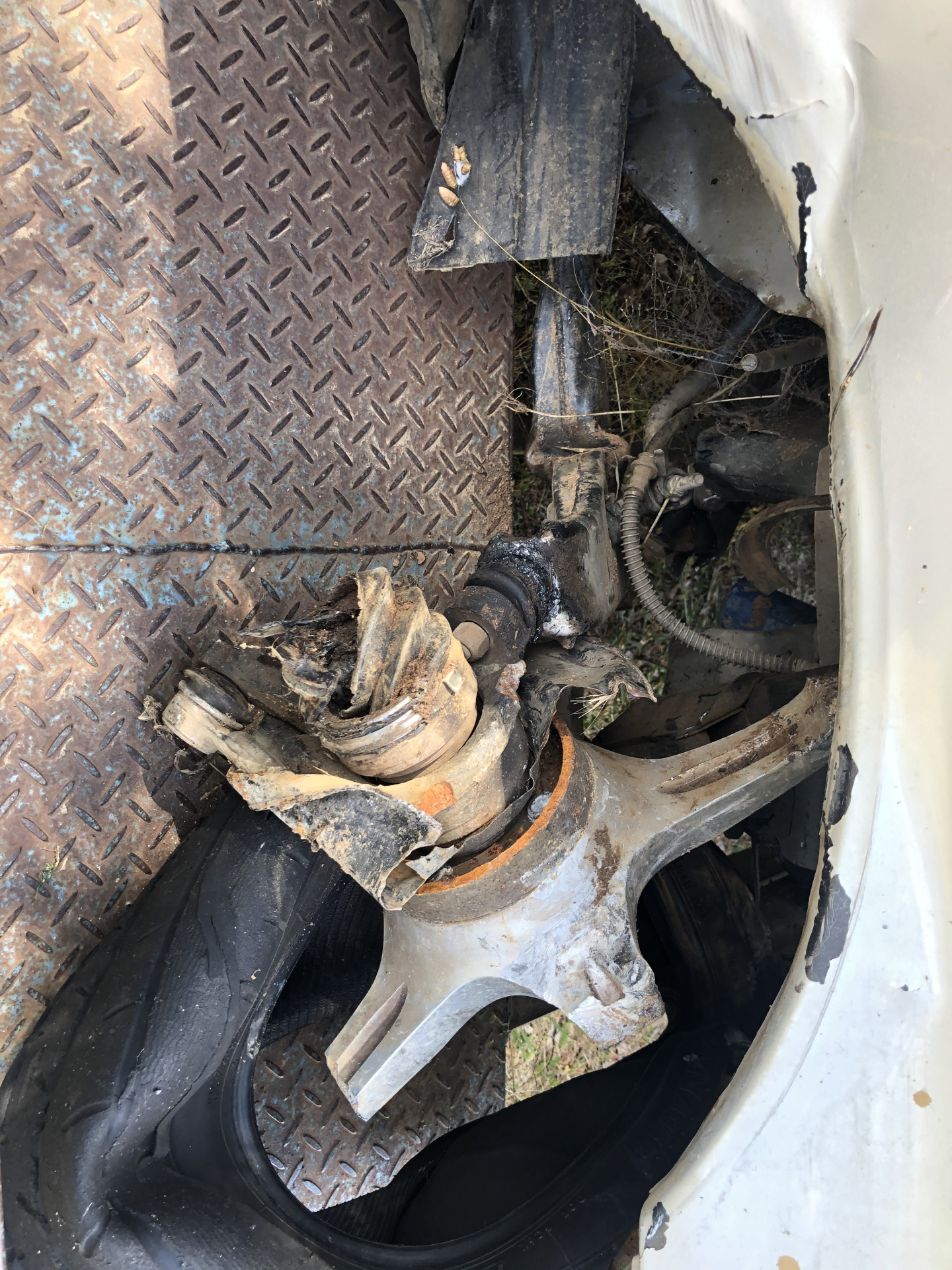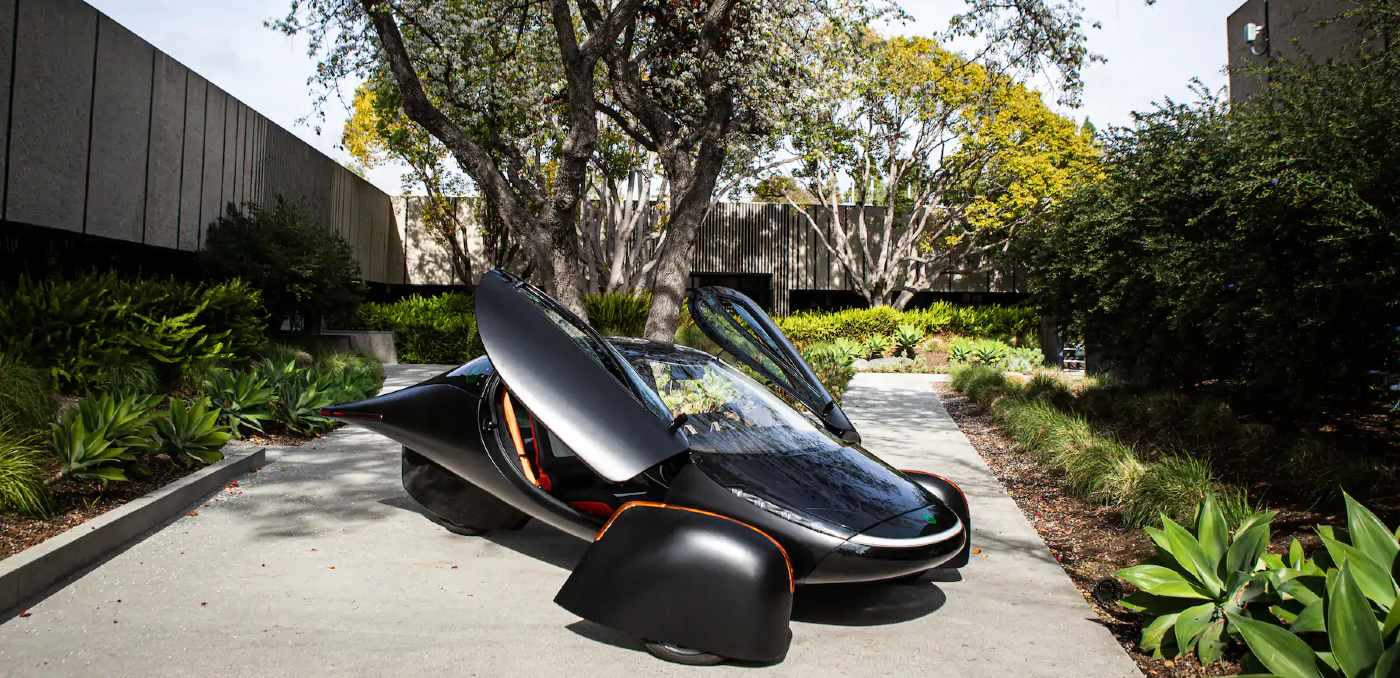Youd be better off focusing on weight reduction. Poly windows. Remove sound deadening. Lithium battery. Remove air-con. Strip interior. Drive with no more than the fuel you need for the trip.
Mirage Hyper-Miler
eggYoud be better off focusing on weight reduction. Poly windows. Remove sound deadening. Lithium battery. Remove air-con. Strip interior. Drive with no more than the fuel you need for the trip.
Nah, weight reduction works for stop-and-go but does hardly anything at constant speed.
Averaged out, I stop 2~3 times on my way to work, and 5~6 times on the way home (more traffic and more right turns onto/across busy roads on the way home).
This is in 55km each way, so it is a pretty clear run.
RoinikLeave it outside during a Canberra storm and you'll have that fresh golf-ball aero profile in no time.
Seriously, get more air to the back. Diffuse it from underneath, bring it in from the sides, whatever.
I have been trying to figure out if I can justify calling it a Kamm back or not... leaning towards “not”, mostly due to the rounded edges on the back corner.
The Lancer coupe looks like a better shape to my untrained eye - tapered turret, longer boot with square edges.
But I really don’t know, and couldn’t find a viable coupe to start with - seems like Mirages were sold new to mums and P-platers in about equal numbers, but the coupes went exclusively to P-platers and were variously flogged to death, attacked by ricer mods and/or badly neglected.
@Ex850R, there’s a definite chance of some wool-tuft testing.
The vehicle mass directly related to engine load. More load more fuel. You should also lower, and stiffen the drive train and suspension. Loss of inertia
Going by aircraft dynamics and engine performance,they fly higher in thinner air and use less fuel and can go faster so you should get a lift kit really..............
eggThe vehicle mass directly related to engine load. More load more fuel. You should also lower, and stiffen the drive train and suspension. Loss of inertia
The load is only particularly relevant when accelerating the mass.
There’s plenty of talk about this on ecomodders.
The lowering is a given. It reduces the frontal cross sectional area of the car by the amount that the tyres are “hidden”, and (more importantly) it reduces the air that can get under the car.
Mythbusters proved that turning it into a golf ball will significantly improve the areo
An engine is continually under load. Just varying amounts. I'd also look at thin, hard tyres. If your purely concerned with your fuel consumption the use 98 with octane booster.
And unfortunately due to earths gravity your always accelerating
https://www.wired.com/2012/08/fuel-economy-vs-mass/
egghttps://www.wired.com/2012/08/fuel-economy-vs-mass/
Yeah, so reducing the mass of the Mirage won’t change its engine or its aerodynamics.

I will absolutely experiment with fuels, but past experience strongly suggests that 98 octane fuel won’t improve the fuel economy of a SOHC 4G15.
It is a common myth that more octane magically makes more power and/or improves economy. Octane ratings are ONLY about detonation resistance - if it doesn’t want to detonate on 91, then giving it more octane does nothing for you.
The whole topic is confused by ECUs being programmed to use knock sensing to alter fuel and ignition timing, but the fundamental point remains: more octane only helps if the motor can use it. As I said, I will definitely experiment, but I seriously doubt that a 1990s Mitsubishi commuter car will benefit from more than 91 octane dishwater.
This statement regularly outrages people on various forums and FB pages, but has never been refuted:
Use the lowest octane fuel that reliably avoids detonation.
Egg, mass is only a fraction of the story when you're moving. It is important if you have a lot of hills to climb though. So, mass relating to friction/rolling resistance is linear. Mass related to hill climbing is linear, however the energy related to the rate of ascent is squared.
Aerodynamic loss related to the front of the car (aka wind resistance) is related to the (area x velocity)cubed.
The long and short of it is to lower aero drag wherever you can, maintaining the radiator cooling inlet at the static point, venting that air behind the car to minimise the disturbed low pressure created by the sharp trailing bluff tail (aka aero drag) and to drag as much air in behind the car to lower the drag further. That is why the most aero shape is a tear-drop.
@Spac check out the Milan SL velomobile for some ideas.
I'll be following this to see what improvements to economy your hypermiling mods will make.
And I might even apply some to my daily driver (I too daily an econobox)

Progress was dragging this home yesterday. It is obviously rooted, but has 55,000km on it so was a cheap way to get a good motor and a set of extractors.
Breaking the caliper off the upright and making the brake rotor disappear is interesting.

time for 11:1+ compression and atkins cycle via updated cams?
also shorten the stroke for less displacement
Philia_Beartime for 11:1+ compression and atkins cycle via updated cams?
Funnily enough, we were talking about that today.
Is Atkins Cycle just Miller Cycle without the forced induction? Or is there a subtlety that I have missed?
It is very clear that the vast majority of motoring journos have no idea how either of them work.
Can you make it look like this?
Aptera Solar-Powered Car With ‘1,000-Mile’ Range Gets 7,000 Preorders for Delivery in 2021 (goodnewsnetwork.org)

Spachttps://ozvolvo.org/discussion/comment/188472#Comment_188472
Funnily enough, we were talking about that today.
Is Atkins Cycle just Miller Cycle without the forced induction? Or is there a subtlety that I have missed?
It is very clear that the vast majority of motoring journos have no idea how either of them work.
Yeah, Atkinson is just miller without the forced induction
https://en.wikipedia.org/wiki/Atkinson_cycleYou would need intake cams with longer duration of open period
if you also have VVT you can switch between otto and atkinson at will depending on load
